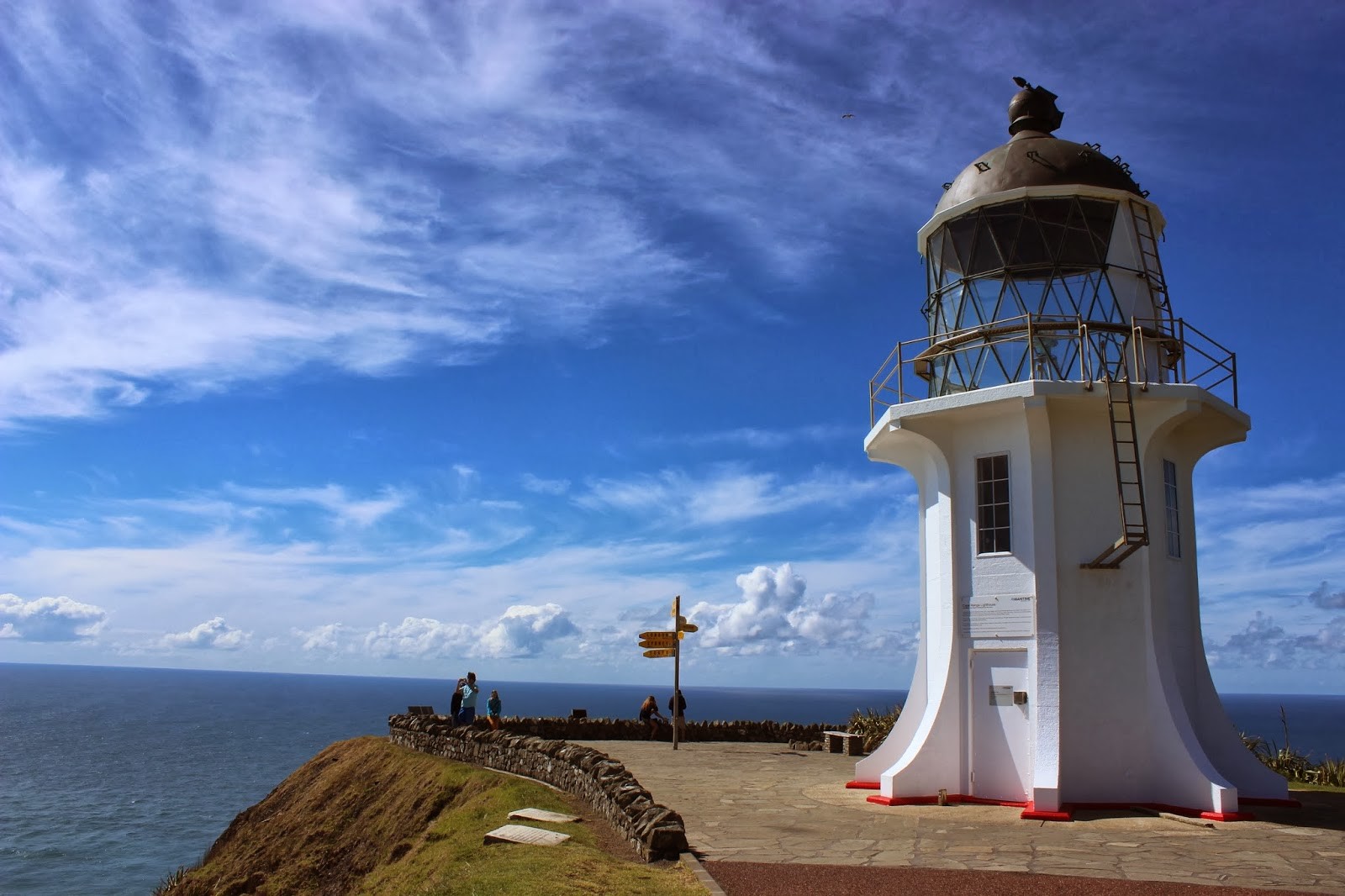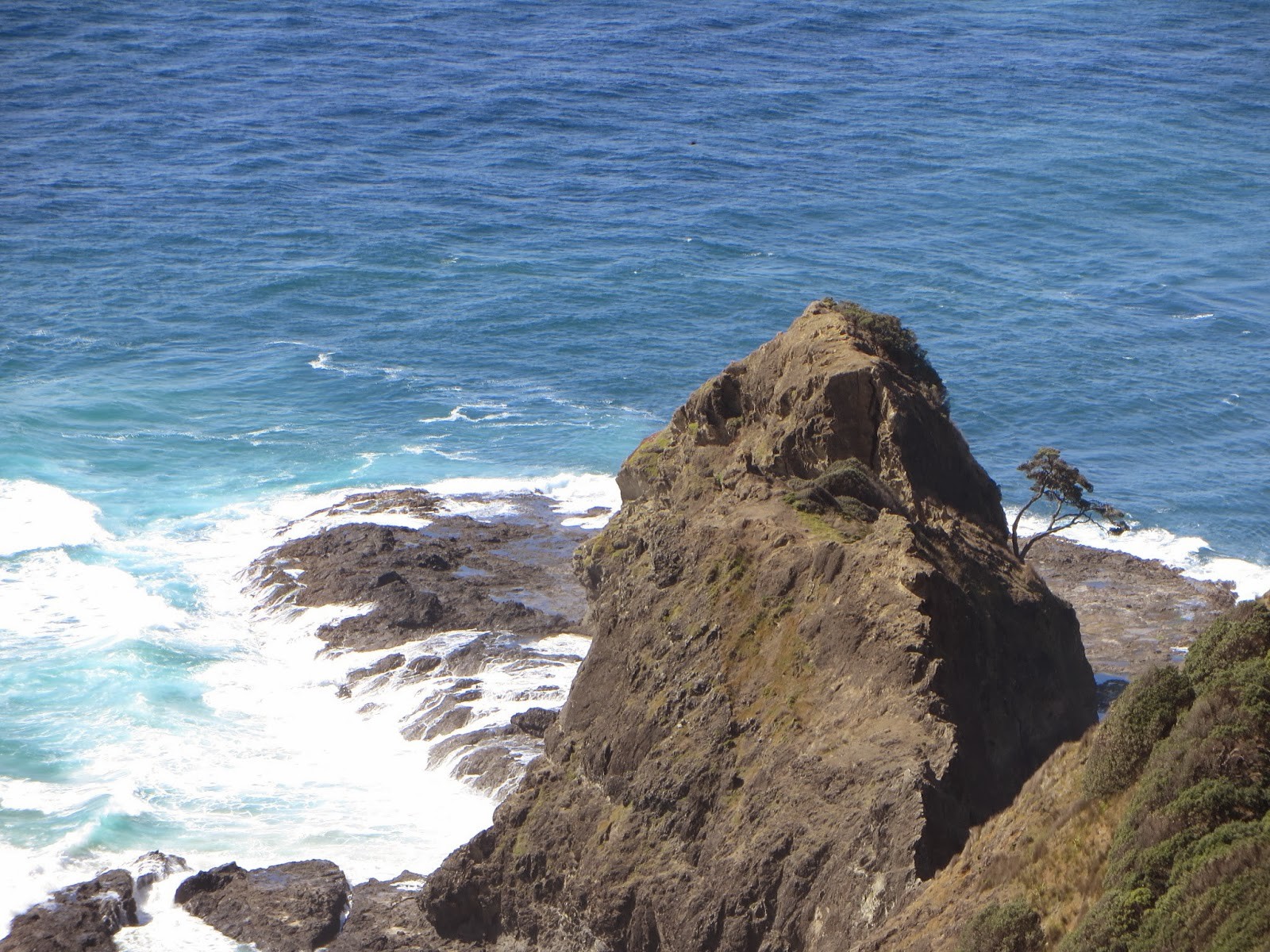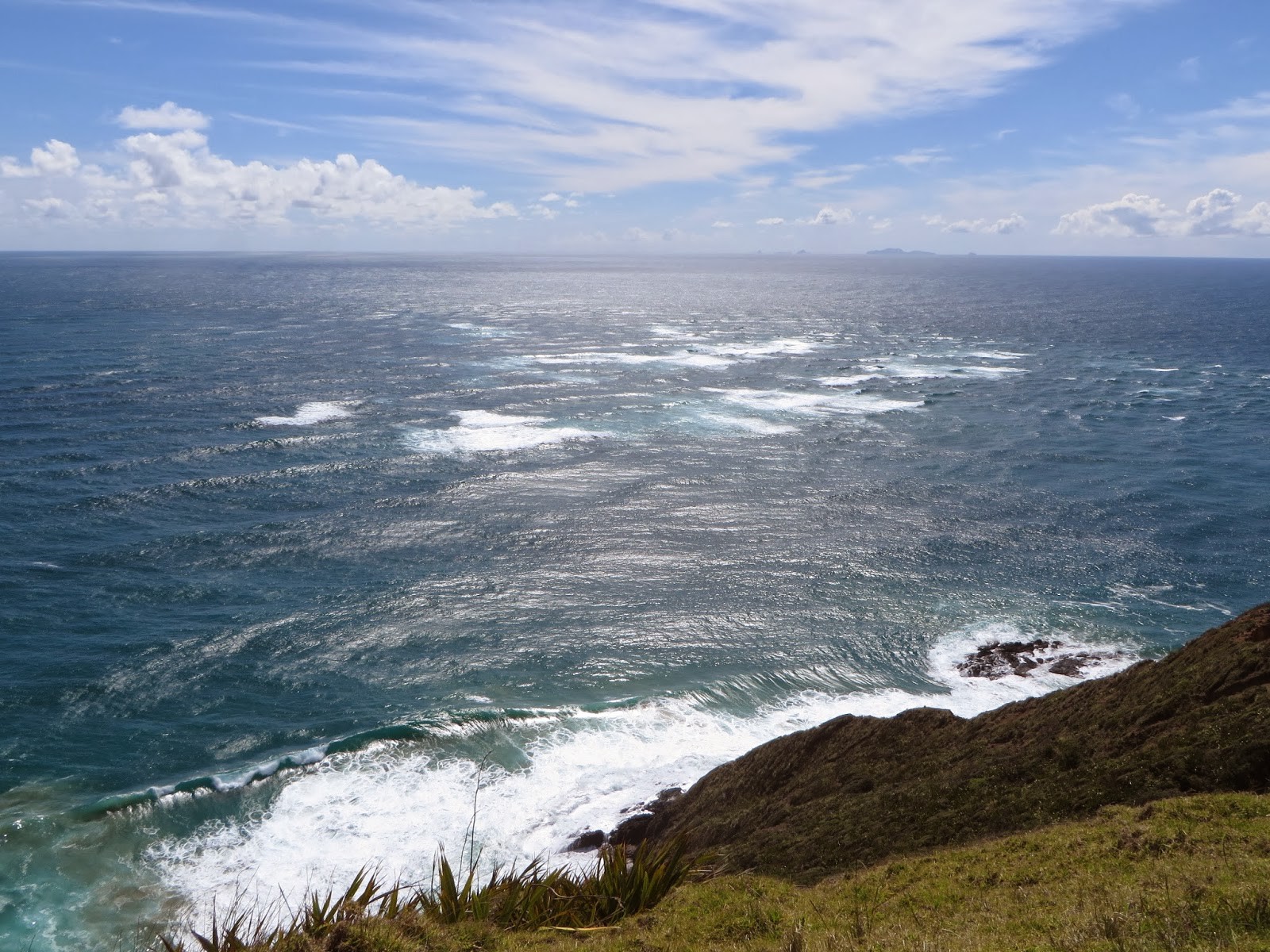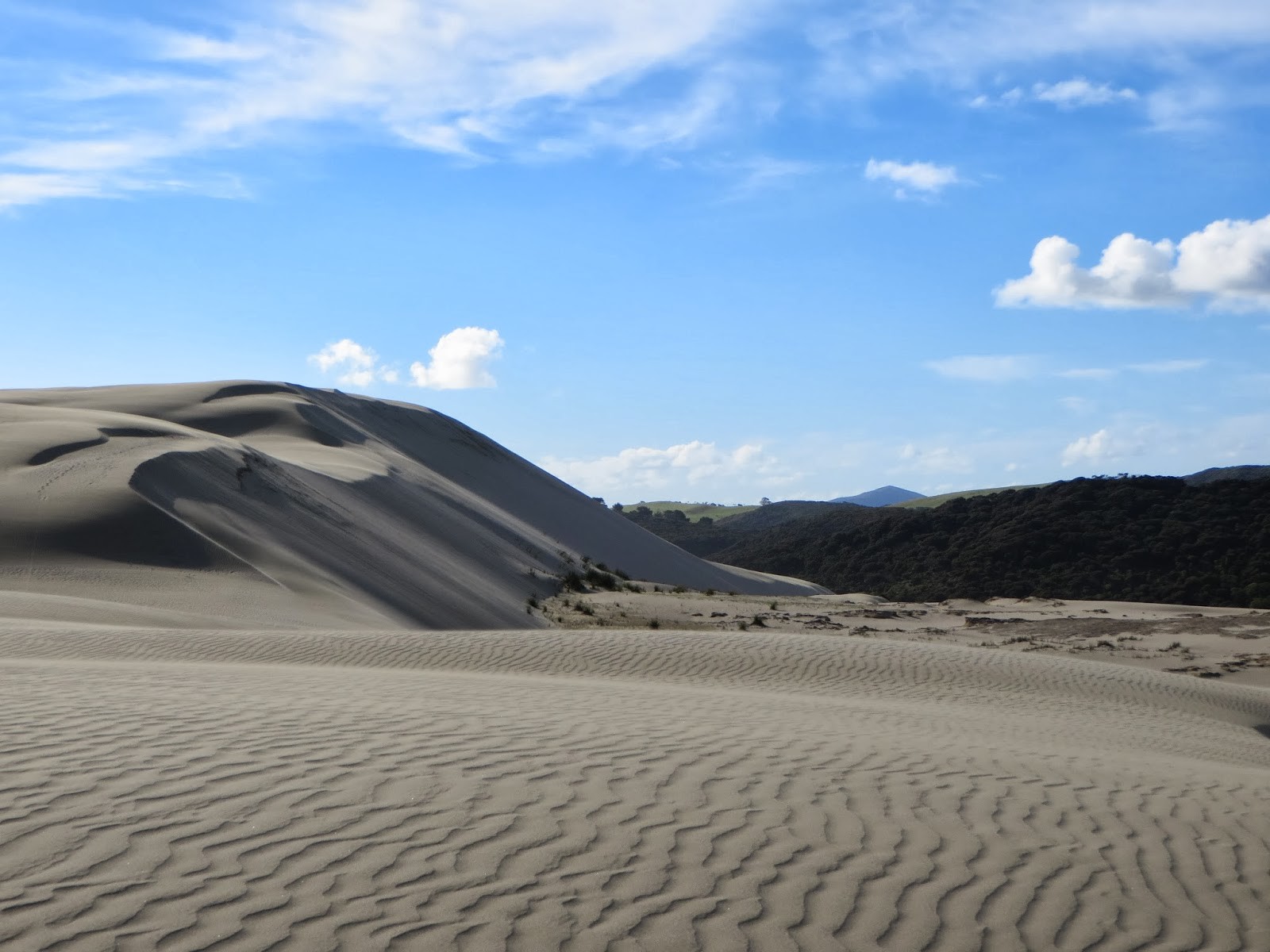The far north of New Zeland
After having said goodbye to our very nice wwoofing hosts, we headed to the far north of the northern island. For that, we had to go back the windy roads to get to the main road and then take the road to the north. There are two roads: a normal highway: which means a real road; and the Ninety Mile Beach, which is – surprise, surprise – a beach with the length of 90 miles. But the most surprising thing about it, it the fact that it is an official highway. This means, it has official signs and an official speed limit of 100 km/h. Luckily, we came at the time of low tide, which is perfect for using the beach as a road. The beach is very wide and the sand hard. We had our turns in speeding and drifting along the highway with our four-wheel drive. It was really fun. We met almost no one on this road and if we met them, they drove as crazy as us. In the middle of the highway, we stopped to have lunch, which was not a problem as there was no cars and also a lot of space to drive around us. It was not as chillig as we thought, because of the strong wind, so we had to hide behind the car from it.


In the far north of New Zealand is the Cape Reinga, which is three kilometres too short for being the most northern point of New Zealand, but it is the most northern point, where you can get by car. And apart from that it is an important place. Firstly, because there is the light house and secondly because it is a spiritual place for the Maori people. They believe that this is the place, where their spirits will leave after the death and through a tunnel return to their home country Hawaiki. The exact place is an old tree on the cliffs, leaning in the wind, but resisting its strength. Hawaiki is the place, where they came from, before settling in New Zealand and it is probably an island in Polynesia. Cape Reinga is also the place, where the Tasman Sea meets the Pacific, which you can clearly see at the places, where strudels are developing. The Maori say that this is the meeting of man and women and the creation of live; one of the Seas is female, the other male.



On our way back, we stopped at the Giant Sand Dunes and, of course, climbed them to see how the view was up there. You could hire boards to surf down the dunes, but we hadn’t done that as it was not cheap and we didn’t have a lot time. But luckily, we met some people with boards, who were tired of climbing the dunes and lent them to us for a ride. In the evening, we wanted to drive back on the Ninety Mile Beach to see the sundown. This should get a very adventurous drive. After the whole day of action, we didn’t think at all, which would pay off. Of course, the tides had changed in the meantime and the sand was wet and not good to drive. We would sink in and could only drive slowly. We continued in the first gear and were waiting for the next exit – which was in about 30 kilometres! – and hoping not to sink in or get too much sand into the car. The car should survive some more time, at least until we leave the country. As the sun was already going down and no exit seemed to be close, we got a bit afraid, as only last week a tourist bus was swept out into to sea, when they didn’t pay attention to the tides and the quality of the road. I didn’t want the same to happen with us. In the middle of nowhere and no one knew, where we were! We were relieved, when we finally found the exit and in perfect timing for the sunset. It was truly amazing, especially with the feeling of having survived this little adventure.



The next day, we drove to Doubtless Bay, where are one of the most beautiful beaches. We went for some strolls, enjoying the sun and taking pictures. Before arriving to Auckland, we did a small stop at the Kauri Tree Museum, in which I was interested. We were already late, but got in for the half price. I really liked seeing and reading everything about the Kauri Trees, the amber, its use, the workers and their tools as well as seeing parts of the biggest trees being preserved in the museum.
All in all, this was a 670 long, successful adventure.
Photo gallery
Content available in other languages
- Español: El lejano norte de Nueva Zelanda
Want to have your own Erasmus blog?
If you are experiencing living abroad, you're an avid traveller or want to promote the city where you live... create your own blog and share your adventures!
I want to create my Erasmus blog! →











Comments (0 comments)